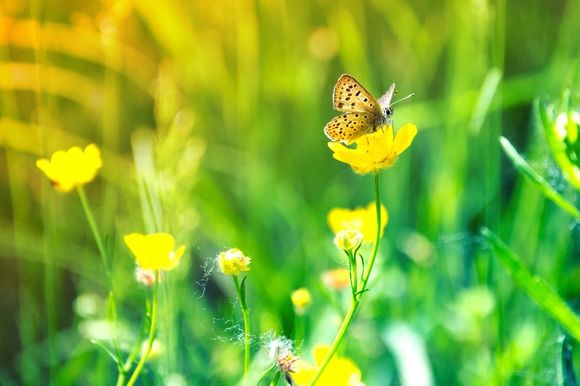It’s easy to understand the allure of a butterfly garden. Watching these magnificent creatures flit from bloom to bloom can be mesmerizing. Tempting butterflies into your yard takes a bit of planning, but it’s well worth the effort. If you’d like to create a butterfly haven, keep these tips in mind:

SunlightButterflies are attracted to the sun’s rays, and as it happens, most of the plants that butterflies like best require at least 6 hours of sunlight each day. With this in mind, your butterly sanctuary should be strategically located in an area that receives plenty of sunshine. You’ll also want to make sure the garden is sheltered from wind. Butterfly wings are not meant for blustery days!
Host PlantsIf you want to witness the entire butterfly life cycle, you’ll need to begin by attracting caterpillars. Butterflies lay their eggs on the best caterpillar food sources, which include: parsley, dill, fennel, milkweed, and white clover. Plant these in your garden and let the caterpillars feast!
Nectar PlantsEqually important is your selection of nectar plants– the flowers your beautiful butterflies will drink from as they flutter about your garden. Here are some favorites:
- alyssum
- butterfly bush
- cornflower
- cosmos
- purple coneflower
- globe amaranth
- heliotrope
- larkspur
- salvia
- sunflower
- zinnia
- phlox
FruitA less conventional idea, but equally attractive to butterflies: fill a saucer up with overripe fruit instead of tossing it in the compost pile. A dish filled with sliced oranges, pears or melons set within your garden is a magnet for butterflies like Admirals and Red-Spotted Purples.
Clumps of ColorPlace like-colored flowers together, recommends Better Homes and Gardens. Butterflies zero-in on large blocks of color when traveling from a distance. They’re more likely to swoop down if they catch a glimpse of one bright color than a mixed jumble of several.
WaterQuench your butterflies’ thirst by offering up a shallow saucer filled with wet sand. In its natural habitat, a butterfly will sip from the muddy, mineral-rich edges of ponds, creeks or puddles, so a shallow bowl of wet sand is a good substitute. Deeper water sources, such as birdbaths, hold less appeal.
Eliminate PesticidesThese can be harmful to butterflies, so keep them away from your garden if possible.
Container GardensNo space for a full blown butterfly garden? A container garden will do. Try planting some lantana, scarlet milkweed, parsley, or dill.
SKM: below-content placeholderWhizzco for CRH

